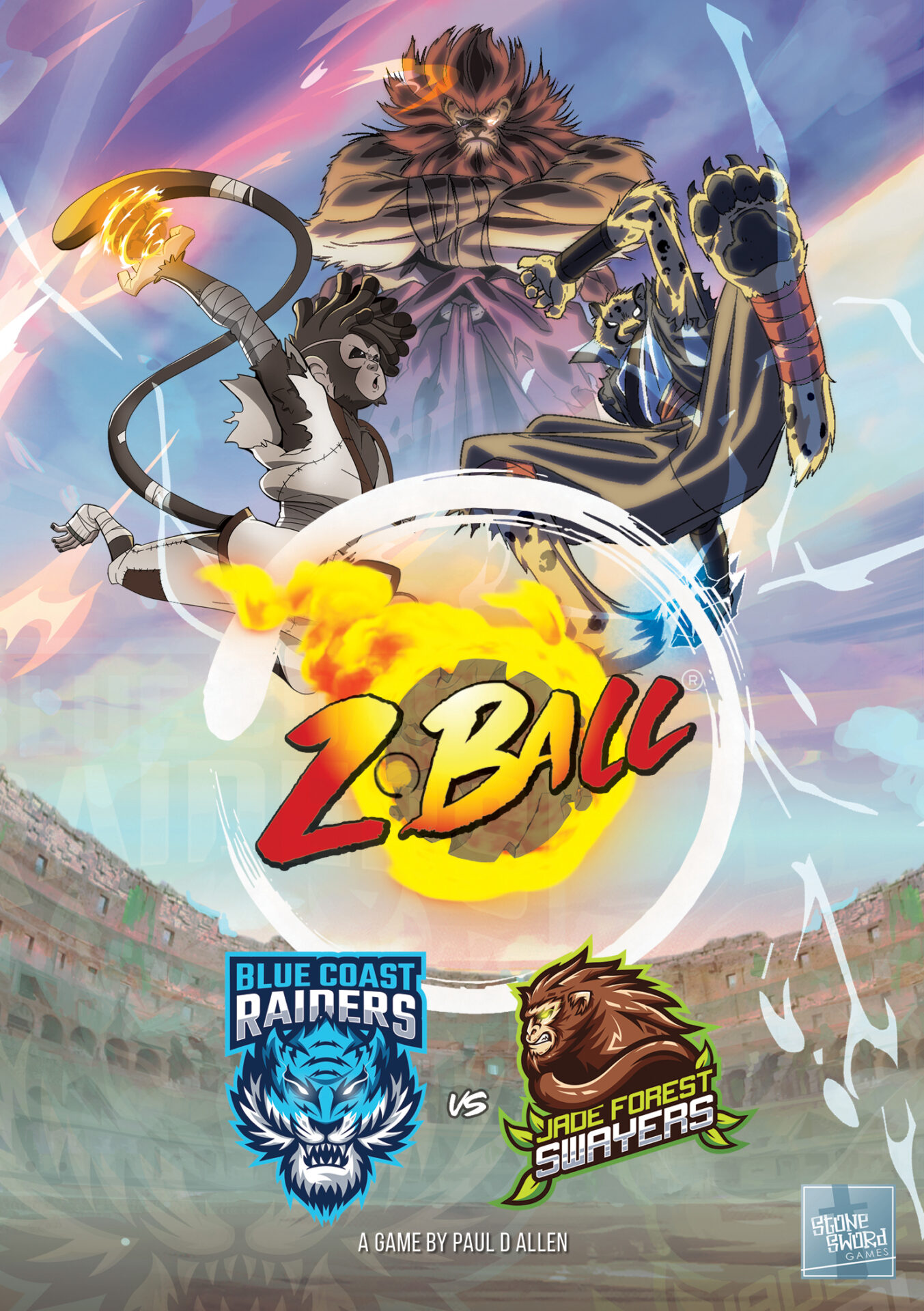I never got into the whole collectible and trading card game scene. I always wanted to. Magic: The Gathering looked so cool, the way players had their decks to battle one another. Even the Pokemon trading card game looked like fun. The problem for me was knowing I’d not have the patience or money to break into it, so I never tried. Still, wanting to play a player vs player card game stuck with me, so when Stone Sword Games asked if I wanted to take a look at their new game – Z-Ball – I jumped at the chance.
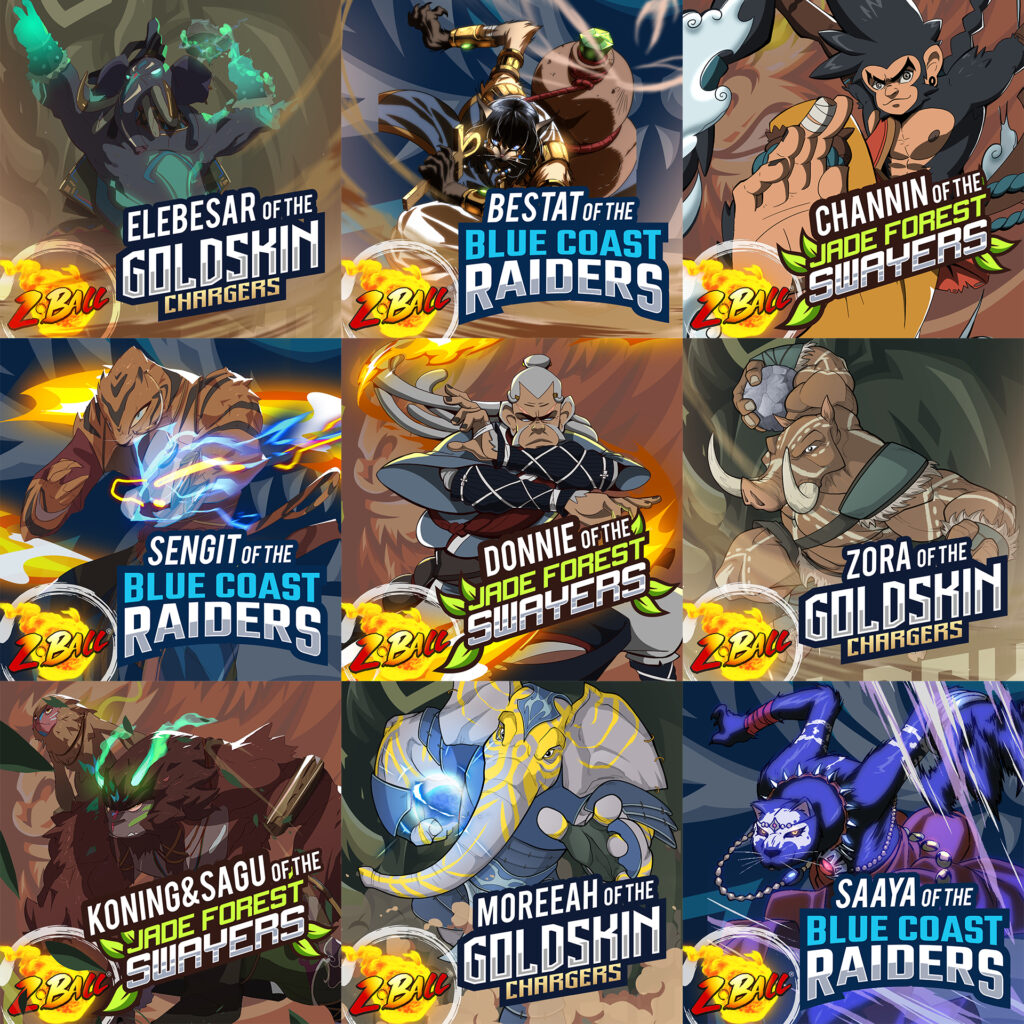
Before I get into the review, I just want to take a moment to acknowledge the artwork. The illustration and character design is absolutely amazing. It looks like something from an established anime series, and the artists deservedly have their names on each card featuring their work. This level of polish can really elevate a game, but only if the game is good in the first place. Is Z-Ball a good game?
Calvinball?
I’ve played Z-Ball quite a few times now, but I’ll be the first to admit that I don’t actually know what’s happening in the fictional sport. From what I gather, the anthropomorphic animal teams battle for control of a ball, attack and defend, and try to score some kind of goal. Except the goals are called Strike Points, and the first team to score five of them, wins!
There is a story about why the sport was introduced to the fictional world of Dunion and its animal clans, and it’s pretty interesting. I hope the lore is expanded on if the game sees success and future expansions.
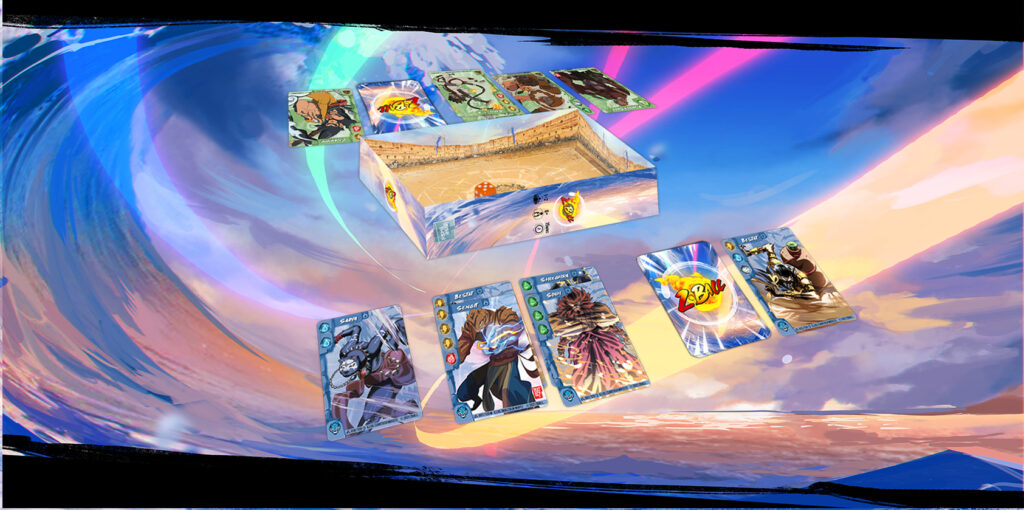
Each team is initially made of pre-built decks, with suitably sporty names like the Blue Coast Raiders and the Jade Forest Swayers. You draw cards from your team’s deck and choose which you want to play, utilising the icons on each one to do things like increase your defence, your potential attack, or draw more cards into your hand. The two teams’ collective strength are grown until someone decides to Strike, and this is where the conflict happens.
Getting over the Try line
Resolving strike attempts (attacks) in Z-Ball is super easy, which is just one of the reasons I think this game could, and should, do really well. Add up all the focus symbols on your cards in play (attacking symbols), roll the included die and add that to your total. Then add up all the defence symbols on your opponent’s cards, and subtract it from the attack total. If the final total is at least six, you score a strike point.
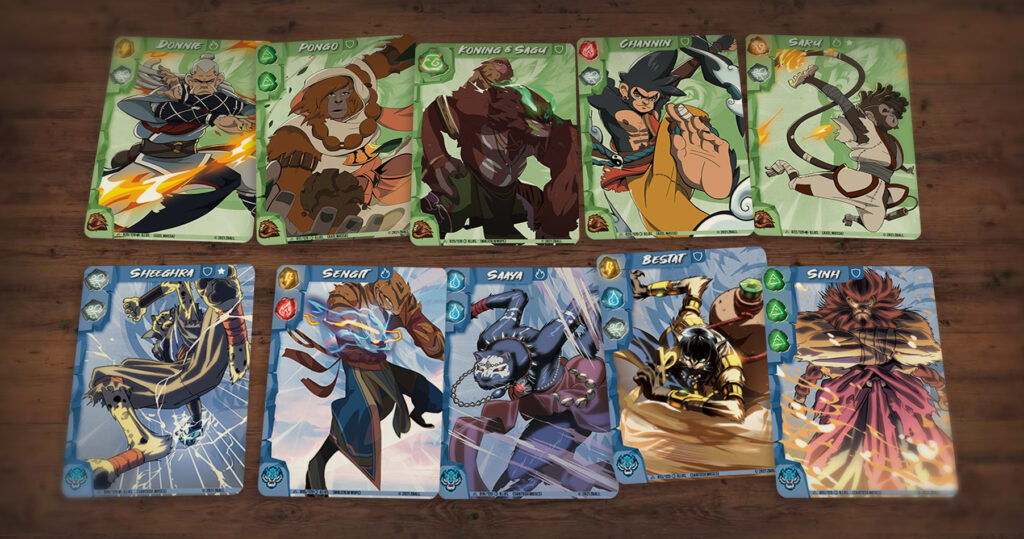
It doesn’t get much easier than that, and it keeps the speed of the gameplay really high. Fast play is important, as the default way to play the game is to play to the best-of-three games. We play a personal variant where we switch decks after each best-of-three, which means we need to learn to play with each team and learn their differences.
It might be difficult to see the benefit of this deck-swapping, especially if you come from a background of competitive card games. What you have to remember is that this isn’t a game where you’ll be spending a fortune on booster decks. At the time of writing there are only four playable teams, two of which come in expansion packs. Making sure you can play with all of them really helps with the longevity of the game.
You can also create custom decks with cards from across all the teams, and there are instructions for deck composition included.
Solitaire
In the game box there’s a third deck, designed solely as a solo opponent. There are another two in the two expansion packs, meaning if you decide to buy them all, there are three unique solo opponents. It’s so nice to see the investment in the solo experience, as it’s so often tacked-on afterwards, but Z-Ball does it properly.
The solo mode is great. It’s simple to run, it’s competitive and fair, and the team you go up against feels really different to the other two. I’m so happy to see solo implemented so well in a card game like this, because it gives you a proper opportunity to learn the cards and the combinations, without needing another person to play against.
Final thoughts
I really like Z-Ball. It quickly turned from a game I wanted to play a few times to give it a fair review, to a game my son and I take when we go somewhere, because we really enjoy playing it. Gameplay is really tight, and scoring is really tricky. You so rarely get an attack lined-up where you’re sure of success, it normally comes down to biding you time as long as you dare, then attacking and hoping for luck on the dice. There’s a really nice moment of drama when you roll the dice in the arena on the inside of the box lid.
You can play and have fun right from the first game, but repeated play is rewarded when you learn the cards well, and know which combo up well with others. You can even start to remember which cards your opponent has used, and which powerful ones are still in their deck.
Z-Ball is cheap (I believe it’ll be less than £20 when the Kickstarter launches), small enough to be really portable, and a lot of fun. The box recommends it for ages 8 and up, and I think that’s spot-on. It might not arrive with the fanfare of an established franchise, but the slick gameplay, great iconography, and low price mean it’s definitely worthy of a place in your collection, if you enjoy card games.
Preview copy kindly provided by Stone Sword Games. Thoughts and opinions are my own.
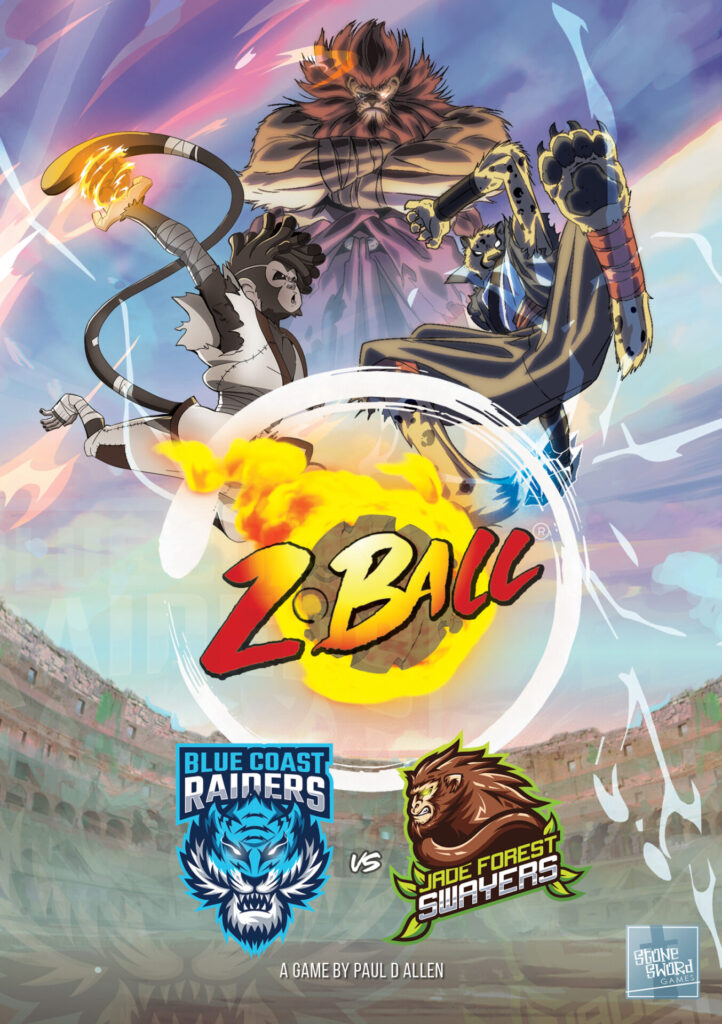
Z-Ball (2021)
Designer: Paul D Allen
Publisher: Stone Sword Games
Art: Various
Players: 1-4
Playing time: 15-30 mins
